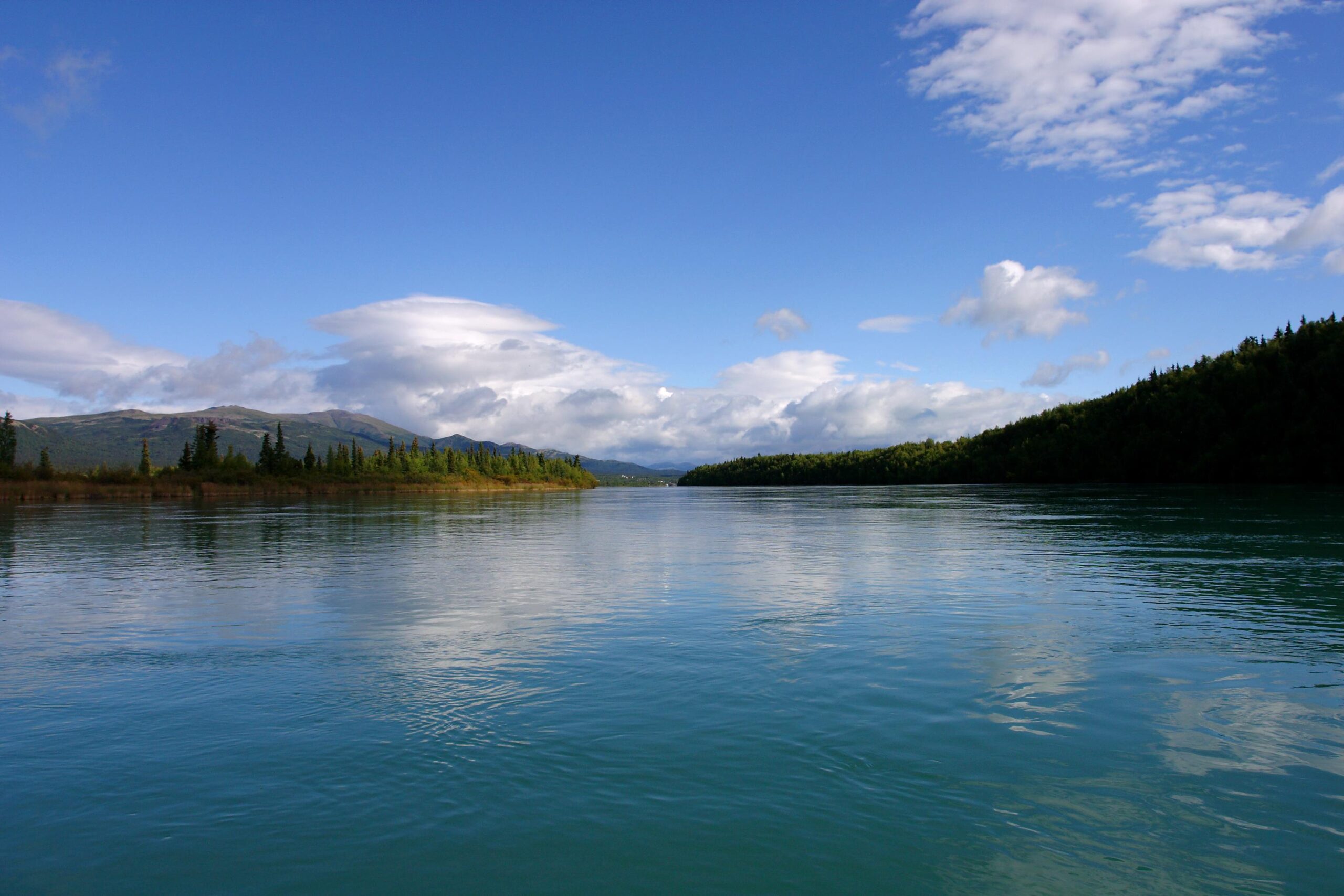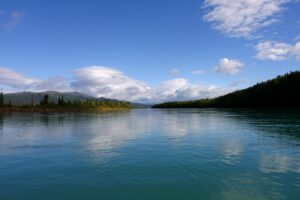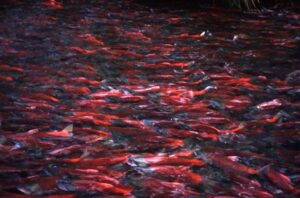
ANTIDEGRADATION—WHAT?
Antidegradation. It’s how the State protects clean water and decides whether to allow pollution of water. Over 99% of Alaska’s waterbodies have exceptional water quality, supporting salmon, halibut, crab, and many other fish, countless subsistence resources, wildlife and wildlife habitat, and recreation across the state. Alaska’s clean water, and the resources it supports, is central to the idea and vision of Alaska. Deciding whether to protect clean water or to allow pollution, and how much, is very important to all Alaskans.

Pristine waters of the Newhalen River. Over 99% of Alaska’s waters have exceptional water quality. Photo courtesy of Erin McKittrick, Ground Truth Trekking.
Antidegradation is one of the core principles of the Clean Water Act. It requires states to protect water quality and the various uses of water, like sustaining aquatic life and habitat and recreation. The principle mandates specific findings that the State must make before allowing water pollution from activities like mining, oil and gas development, and cruise ship discharges.
The Environmental Protection Agency (EPA) requires states to have both an antidegradation policy and implementation methods for that policy. The Alaska Department of Environmental Conservation (DEC) adopted an antidegradation policy in 1997, but failed to adopt implementation methods. Despite the lack of implementation methods, for nearly two decades, DEC has approved permits that allowed pollution to be discharged into waters across the state. This was illegal.
Trustees for Alaska raised the issue that the lack of implementation methods meant that those permits were invalid with both EPA and DEC. And EPA agreed with us. In 2010, DEC issued Interim Implementation Methods as a guidance document, without any public process. That meant that Alaskans had no voice in crafting the regulation that would allow pollution of the waters they depend on. Trustees challenged the Interim Methods as an illegal regulation on behalf of eight conservation and tribal organizations because of the lack of public involvement. Unfortunately, we lost that challenge.

Alaska’s clean water supports important salmon populations and habitat. Photo courtesy of Carol Ann Woody.
But while Trustees was unsuccessful in challenging the Interim Methods, we did get DEC to agree to move forward with a public rulemaking process. That process will result in final Implementation Methods that clearly set out what DEC and anyone who wants to pollute Alaska’s water’s has to show. DEC already issued one proposal for public comment, and is set to issue another sometime this year or early in 2016.
Trustees will continue to work with our clients to ensure that the final Implementation Methods protect water quality as envisioned under the Clean Water Act and ensure public participation.
Learn more at the Alaska Department of Environmental Conservation’s website about antidegration.


